In the audiophile world, it is rare but not uncommon to see a top-level dealer import a more obscure, non-distributed product, thus become their de facto U.S. distributor. These dealers take the risk of bringing the product over from wherever in the world that the product comes from. In this country, they tend to stock a little bit of inventory and then sell it both to consumers and to other North American dealers. These types of business relationships offer larger than normal profit margins for the importer (the dealer in this case), but come with challenges such as marketing and getting press for the often unheard-of audiophile brand. This is the challenge that my uber-high-end friend, Sunil Merchant of Sunny Components, has endeavored upon by bringing in the audiophile electronics line ASR from Germany. To be clear, Merchant has a very good ear for audio and great business sense.
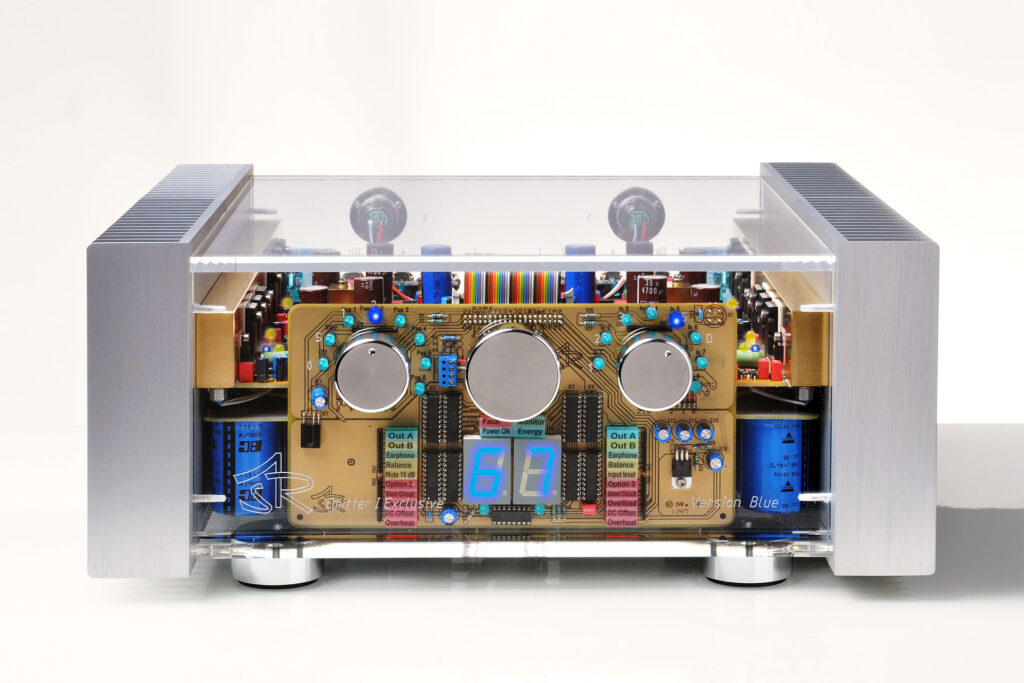
Like many other German audiophile companies, marketing isn’t much a consideration for ASR, as engineering comes first, second and basically ahead of anything promotional. Un-shocking to anyone who’s been around for a minute or two in this hobby/business that ASR falls into that category, which is one hell of a challenge for Merchant as he rallies his friends in the audiophile press to look at an expensive, exotic audiophile brand of electronics that presents itself as a value but is still, by anyone’s standards, high-end audio gear.
The product that I’ve been playing with since T.H.E. Show, an audiophile event hosted near my home-away-from-burned-up-home (that State Farm refuses to pay for – readers: replace them if you can as your insurance company with my strongest encouragement, as we can’t in most of California), is the ASR Emitter 1 integrated amp. It is a $12,000 two-chassis audiophile integrated amp designed to slay audiophile dragons while putting a smile on your face musically. The basic Emitter 1 integrated amp from ASR is $12,000 and comes with an outboard 90-pound external power supply. For just a bit under $5,000, you can add an additional battery-based power supply for another performance boost and a third chassis to your ASR electronics rig. Like CH Precision, Merchant is one of the top dealers in the world for this ultra-expensive Swiss audiophile electronics brand, and their $38,000 to $53,000 integrated amp is massively configurable and upgradable to over $100,000 in retail. The ASR is expensive, not that extreme, but it too is very configurable and upgradable. At $12,000, should you give up on the idea of separates? That’s one of the many questions that we need to look at in evaluating the ASR Emitter 1 audiophile integrated amp.
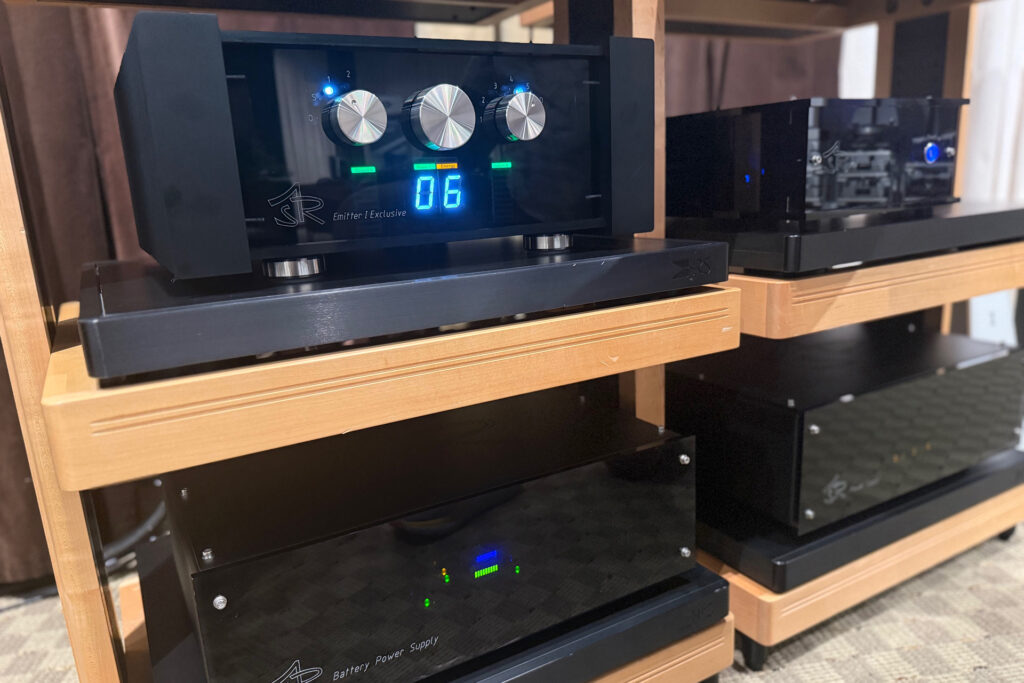
What Makes the ASR Emitter 1 Integrated Amp Special?
- The ASR Emitter 1 understands that an audiophile component’s power supply is often its most important design element. This is becoming a well-publicized concept in the world of Class-D amps (learn more here) and audiophile digital, but European audiophile electronics companies are getting “out of the box,” if you will, by adding an outboard power supply to their products to remove issues of bad power and to reduce measured distortion. T+A, another respected German audiophile electronics company, sells high-end aftermarket audiophile power supplies for its T+A HV products. CH Precision really pushes their external power supplies. Naim Audio, from Scotland, has always been a proponent of external and upgradable power supplies. ASR is yet another in on the trend.
- The ASR Emitter 1 integrated amp is very configurable. At $12,000, you get multiple inputs, including one XLR (fully balanced), as well as four RCAs (unbalanced). You can order your unit exactly as you like: all balanced, or all unbalanced, or with special cards designed for reel-to-reel, etc. You can order aftermarket products like WBT connectors and make other customizations for more (but not a lot – like a few hundred dollars each) to your unique ASR Emitter 1 integrated amp.
- The stock ASR Emitter 1 integrated amp comes with two power modes. One is a lower-output option that is Class-AB, but acts/sounds like what we expect sonically from Class-A electronics. The second power mode, which you can engage right from the really well-made polished knobs on the front of the unit, is higher gain, which can easily drive more demanding speakers. Most of my listening was in the low-power mode.
- The rated power of the ASR Emitter 1 integrated amp in four ohms into 250 watts per channel. That’s a lot of audiophile power from an integrated amp but, for $4,995, you can add a card that ups your 250 WPC to 450. That’s no small power upgrade and allows for a gaudy amount of headroom when needed.
- Another unique element of the ASR Emitter 1 integrated amp is that it is often paired with a Battery Power Supply Unit for $4,650. Battery power allows an audiophile to somewhat decouple from the often-yucky power in our electrical grid and run from reserve power in the battery. At nearly five grand, this is no small cost, but there is a pretty clear improvement in performance, as we did a volume-matched test with and without the battery on the same track. You could hear the additional POP on snare drums. You heard just a little bit more depth in the soundstage. Was the improvement jaw-dropping? No, but anybody could hear the difference and everybody would want it. The question is, do you have an extra $4,650 to invest now (or later is okay, too) to get to that Nth level of performance.
- The cable that connects the power supply with the ASR Emitter 1 integrated amp is made of silver, which is very expensive. The connector used is beyond robust with a crazy-looking multi-pin connector. This shows you where the design money goes in a product like the ASR Emitter 1 integrated amp.
Why Should You Care About the ASR Emitter 1 Integrated Amp?
In the past five years or so, the market category of very high-end integrated amps (let’s call that $10,000 and higher) has become much more evolved and popular. Before that, few audiophile integrated amps could compete in terms of overall performance with a separate audiophile power amp and stereo preamp. Today, modern integrated amps have bridged the delta in performance quite nicely. The ASR Emitter 1 integrated amp isn’t the most feature-laden high-end audiophile-grade integrated amp, but it is sonically right in there with the big boys, which almost all cost more money. The audiophile who will be interested in the ASR Emitter 1 integrated amp wants the performance of high-end separates but the simplicity of an integrated amp. That’s completely on the table today.
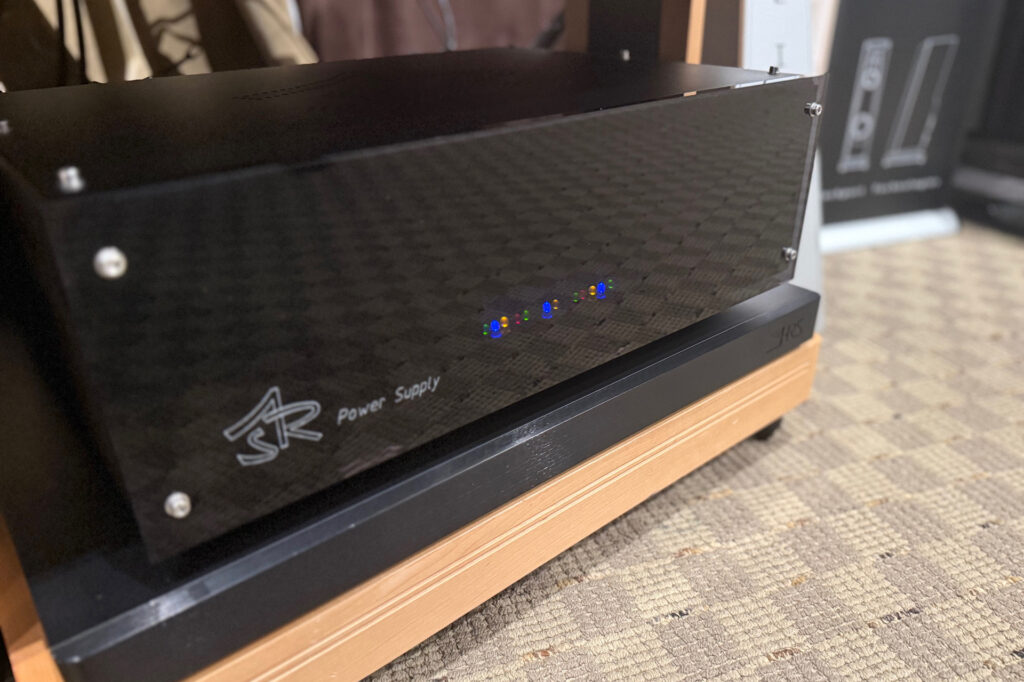
Some Things You Might Not Like About the ASR Emitter 1 Integrated Amp
- The included remote control is just awful on the ASR Emitter 1 Integrated Amp. It is made of Corian, which is solid but fits poorly into your hand. It is heavy and has no provisions for the hard edges of the faux stone that might cost $0.10 to solve with some simple felt or rubber. Volume control via the remote is inaccurate and fully unlike turning the controller on the front of the unit. There is also no backlighting on the remote. There are no plus or minus buttons on the volume controls. Let me cut to the chase: the remote for the ASR Emitter 1 Integrated Amp is one of the worst that I’ve ever encountered in 25 years of reviewing high-performance audio/video equipment. The good news is that it can be easily fixed by the company and/or bypassed by leaving the unit at unity gain for sources like Roon, and just using the iPad volume control for Roon.
- Simplicity is excellent, but having a second chassis for the power supply doesn’t make anything smaller or change the form factor of owning, say, a standalone audiophile power amp and preamp. This is not an all-in-one-chassis audiophile solution like others in its class.
- There is no DAC or phonostage included at $11,995.
- Despite the lack of presence in the United States, the ASR Emitter I is in its 12th version. This integrated amp has been made for 45 years but it is important to note that it was massively redesigned in 2022/23 which brings us to the current version.
- There is no HDMI. There is no room correction and there is no bass management, thus the ASR Emitter 1 Integrated Amp is low on real-world features yet pretty high on real-world money.
- The ASR Emitter 1 integrated amp isn’t a full 17-inch-wide component, which is maddening for people who professionally rack-mount their equipment. Their larger electronics are even harder to work with, as they are larger than 17 inches wide, thus flipping the bird to the custom installation and professional audio communities. That’s just foolish and should be fixed for future components from the brand.
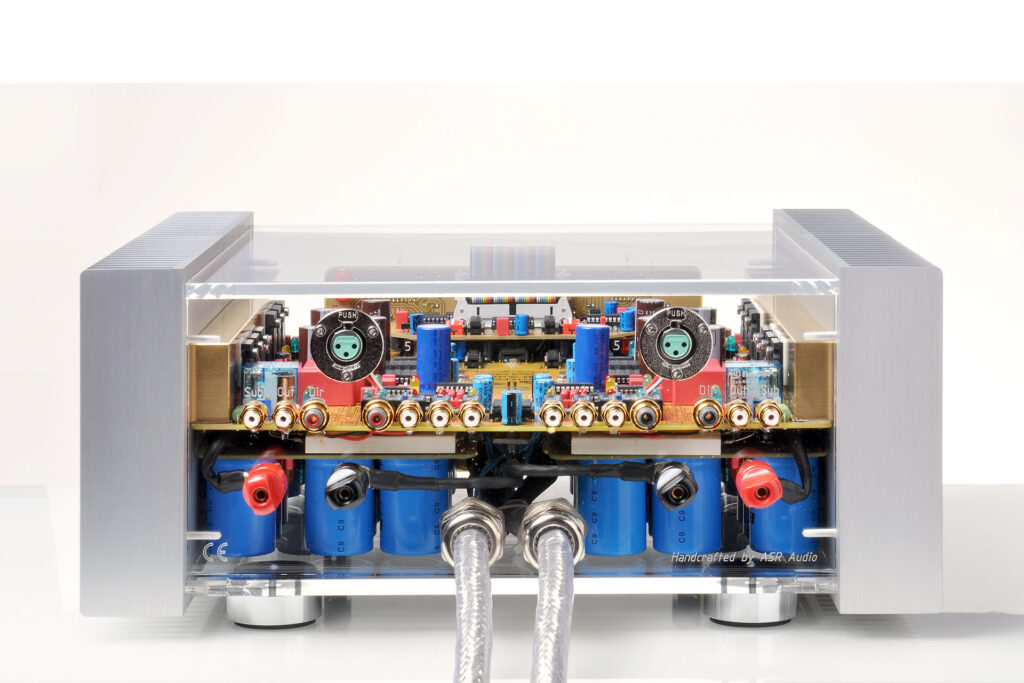
Listening to the ASR Emitter 1 Integrated Amp …
A few weeks ago, I got some time to play with the ASR Emitter 1 integrated amp during T.H.E. Show here in Orange Country in one of Merchant’s rooms. I was able to spend much more time with the ASR Emitter 1 integrated amp recently on a system consisting of a $5,000 Wattson DAC (review potentially pending from Jim Swantko), a Brinkman turntable (rarely used in our demos but badass nonetheless) and Rockport Atria II $38,000 per pair floorstanding speakers. The gear was installed on a solid HRS equipment rack. The speakers were placed pretty close to the back wall to get more bass performance. No audiophile subwoofer was being used. Roon (learn more here) was the source via the Wattson and controlled by an iPad, as I normally do with a BlueSound Node.
Beyoncé’s “Blackbird” from her recent Cowboy Carter album (from Qobuz) is an instant audiophile classic. This layered and wonderfully recorded Beatles cover has the Lennon-McCartney songwriting appeal and the draw that comes from the female voice of our generation, but the cost-no-object recording is where you get into the real gold. It only took seconds before I blurted out WOW to Merchant as we were listening. The amount of space around the instruments was staggeringly good, even before you got the first chorus. There are lots of percussive details, like a plastic pick smacking into the body of an acoustic guitar, and the black background of the ASR Emitter 1 integrated amp left a sonic canvas that let you hear more of the recording. That is an audiophile win and illustrated what the outboard power supply brings to the table – at least in part.
Band of Gypsies’ “Power of Love” from Qobuz tests my concept of, “If your stereo can’t make Jimi Hendrix sound good, then perhaps your stereo system just plain sucks.” Let me be clear: with the ASR Emitter 1 integrated amp in the loop, you could hear the age/patina of the recording, but you never lost the all-important emotion. The center imaging was just fantastic and fully engaging. The bass wasn’t super deep, but what you could hear was very, very well-controlled. It was easy to dig into this later Hendrix song and get way into it while listening on the ASR Emitter 1 integrated amp.
To explore what the $4,650 battery power supply does, we cued up “Hey You” from Pink Floyd’s The Wall via Qobuz. We carefully matched the volume and switched in and out with the battery power supply on this fretless bass gem from one of the best albums in rock and roll history. The differences were slight but absolutely audible. Snare drums have a little bit more snap with the secondary battery backup engaged. The ever-so-slight (think: Class-A-like) warmth was more engaging with the second power supply in the mix. Details came through from the recording more easily, which is just what we are looking for in a high-end audio system. That’s the high that we chase in this hobby. By no means do you need to start with the battery power supply, but it is a viable and worthy upgrade down the road.
Will the ASR Emitter 1 Integrated Amp Hold Its Value?
There are a lot of nice things that I can say about the ASR Emitter 1 integrated amp, but I cannot call the brand blue-chip. The company is a typical no-marketing, historically un-distributed brand that has close to no reputation with audiophiles in the United States as of 2025. While there are close to zero units on the used market today, it is really tough to predict the future value of such a new-to-the-market audiophile brand.
At one level, the ASR Emitter 1 integrated amp punches above its weight sonically, but at another, it is still a very expensive integrated amp that still needs many other components attached to front a fully-working modern audiophile system. Will you lose your ass buying a ASR Emitter 1 integrated amp? No, I don’t think you will, but more well-known brands will sell faster and for an incrementally higher percentage of the retail price.
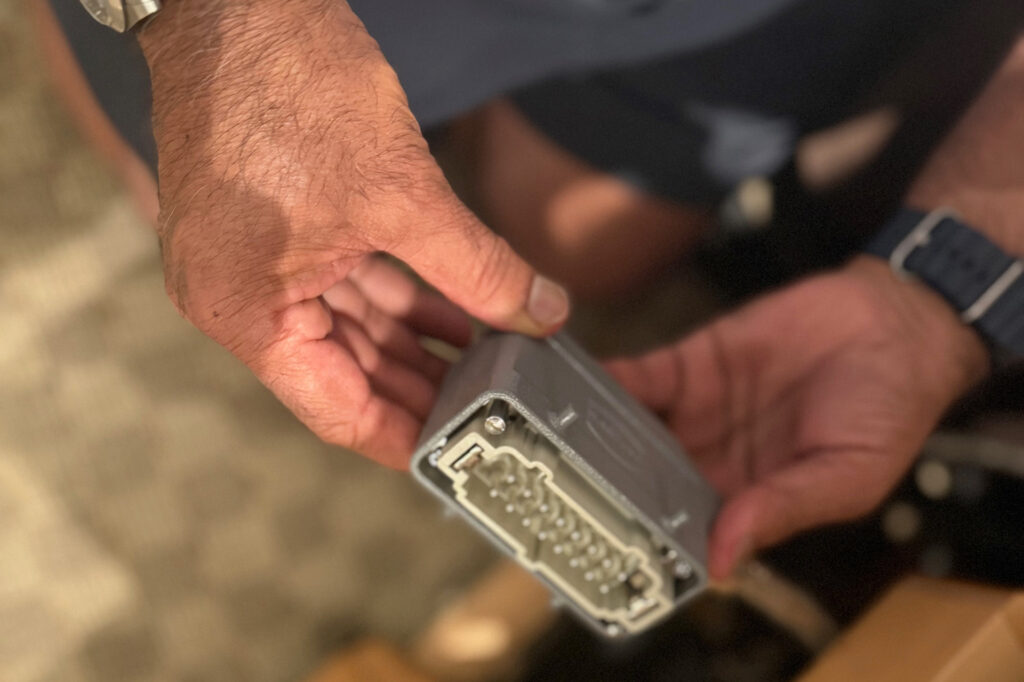
What is the Competition for the ASR Emitter 1 Integrated Amp?
The T+A R 2500 Multi Source Receiver (read the review) at $18,800 is a good comparable for the ASR Emitter 1 integrated amp. Both are German. Both put a lot of design emphasis on a sound-first approach, which is commendable. The T+A has a whole lot more features built into its value proposition, which makes it appealing to many audiophiles who are looking for a more all-in-one-box solution. Both units are built like a Maybach and both sound great. The T+A is just capable of many more feats at over $5,000 more in basic retail price.
Made in America (no tariffs) is the Pass Labs INT-250 (read my review) at $12,600. The feature sets here are almost identical and the performance is that of a combined Pass Labs XP-12 preamp(read Greg Handy’s review) when it had been merged with a Pass Labs X250.8 power amp (read Paul Wilson’s review). You get the best that a Wayne Colburn-designed preamp can offer paired with a Nelson Pass designed power amp, and that is the audiophile version of a good pairing like peanut butter and chocolate. The ASR Emitter 1 integrated amp is really quiet and presents details wonderfully. The Pass Labs INT-250 felt like it was just a little bit more exciting on the high end. It is also a simpler one-chassis solution.
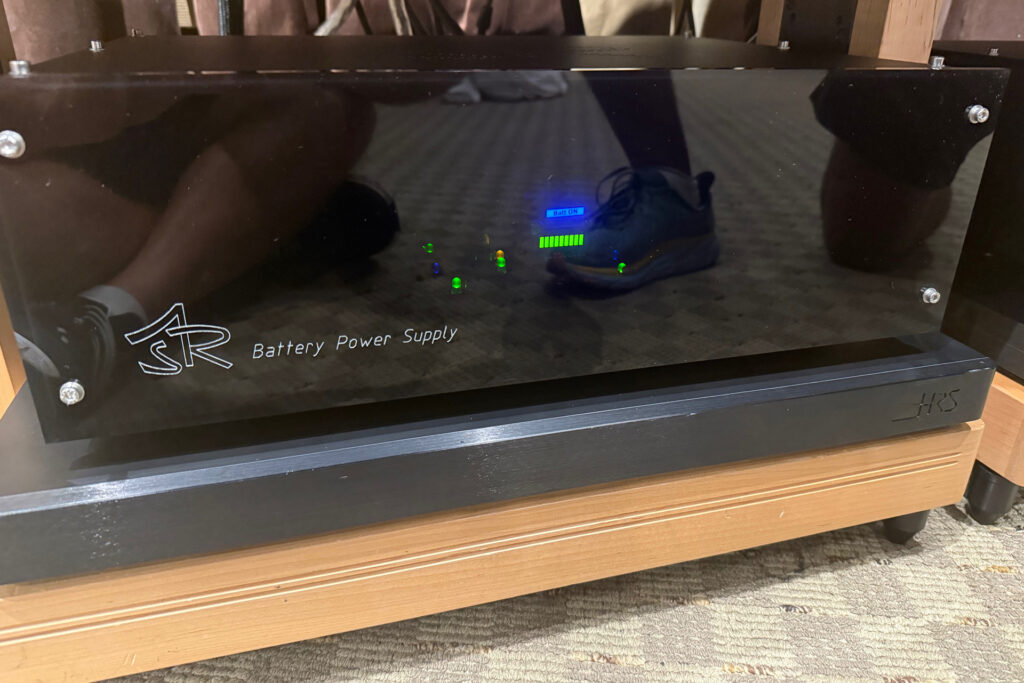
Final Thoughts on the ASR Emitter 1 Integrated Amp …
Nearly every morning, I take my sorry/fat ass for a walk. Right now, I am headed to Crystal Cove State Park in Newport Coast, California, which is stunningly beautiful as a backdrop for me making my morning calls. Often, I will check in with Paul Wilson, who has been covering this category of higher-end integrated amps more than I have. He is right when he says that the progress that has been made in this category in recent years is really amazing. It is safe to say that today’s integrated amps are capable of nearly every drop of the performance that you could historically expect from a separate audiophile preamp, amp, DAC and, in many cases, other components.
The ASR Emitter 1 integrated amp is a newcomer in the world of audiophile integrated amps and high-end electronics in the U.S. market, and allow me to welcome them to the country. This gear is topnotch stuff that is so engineering-driven that performance is dripping from every headphone jack and RCA input. $12,000 is lot of money for an integrated amp but, when you consider that the ASR Emitter 1 integrated amp can hang with (or best) other high-end integrated amps costing two, three or four times as much, you get my point about relative value. Most integrated amps offer no good upgrade path. The ASR Emitter 1 integrated amp changes that, as do products from the likes of CH Precision for much more money. To compare CH’s nearly $40,000 (starting price that can balloon to $100,000-plus with all the options) integrated with the ASR Emitter 1 integrated amp isn’t as crazy as it might seem on paper. The ASR Emitter 1 integrated amp is not just a very strong performer in the audiophile electronics world, it is a bit of a value, too.




Hi Jerry, I love your reviews but Naim come from Salisbury in southern England not Scotland. You are thinking of Linn I reckon!